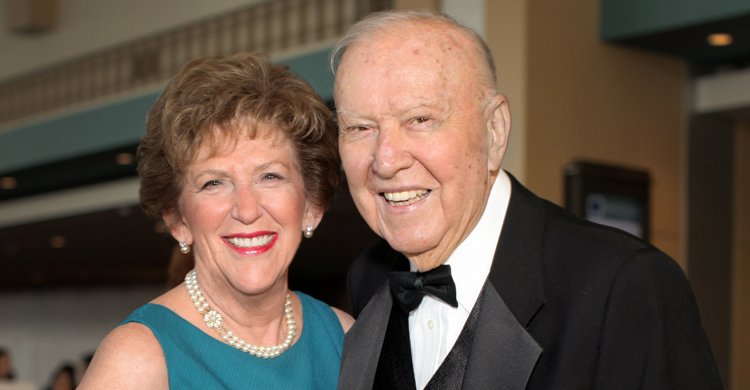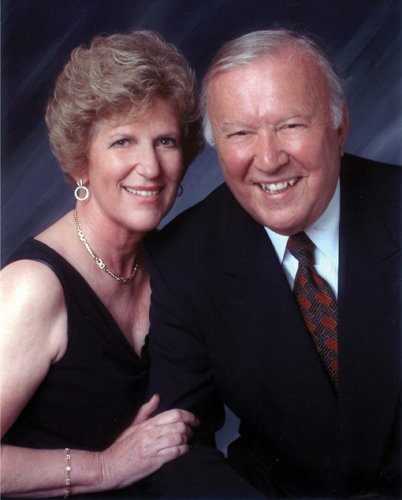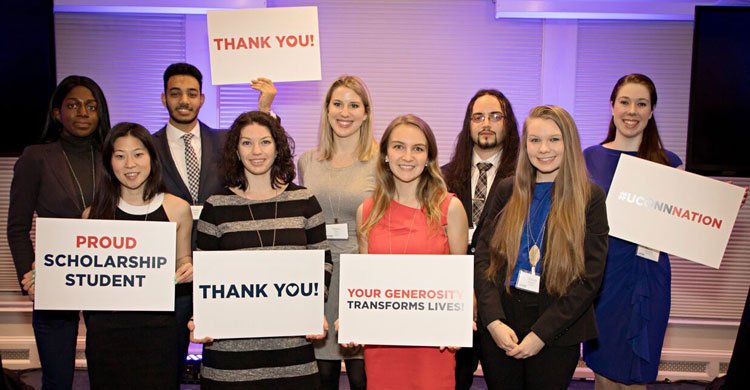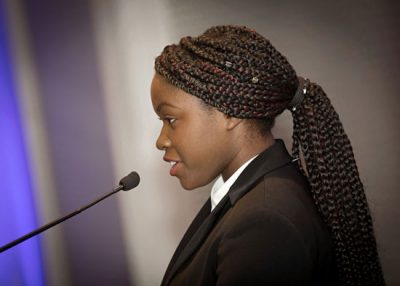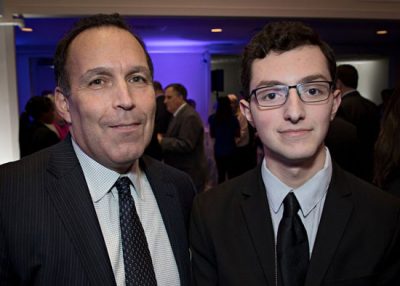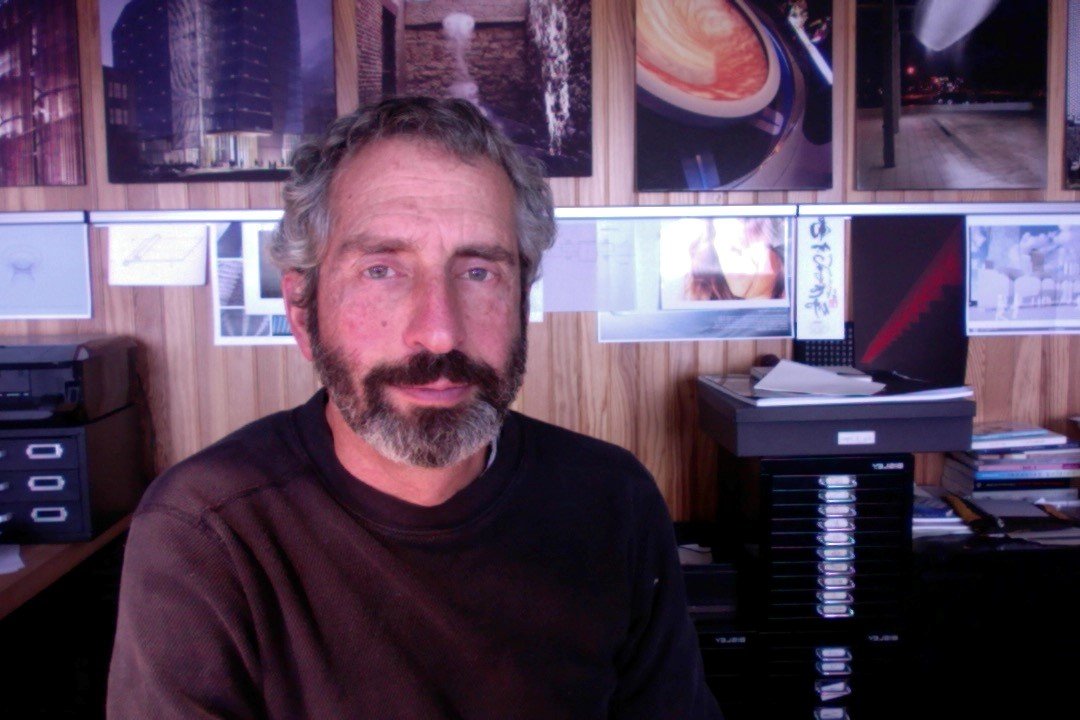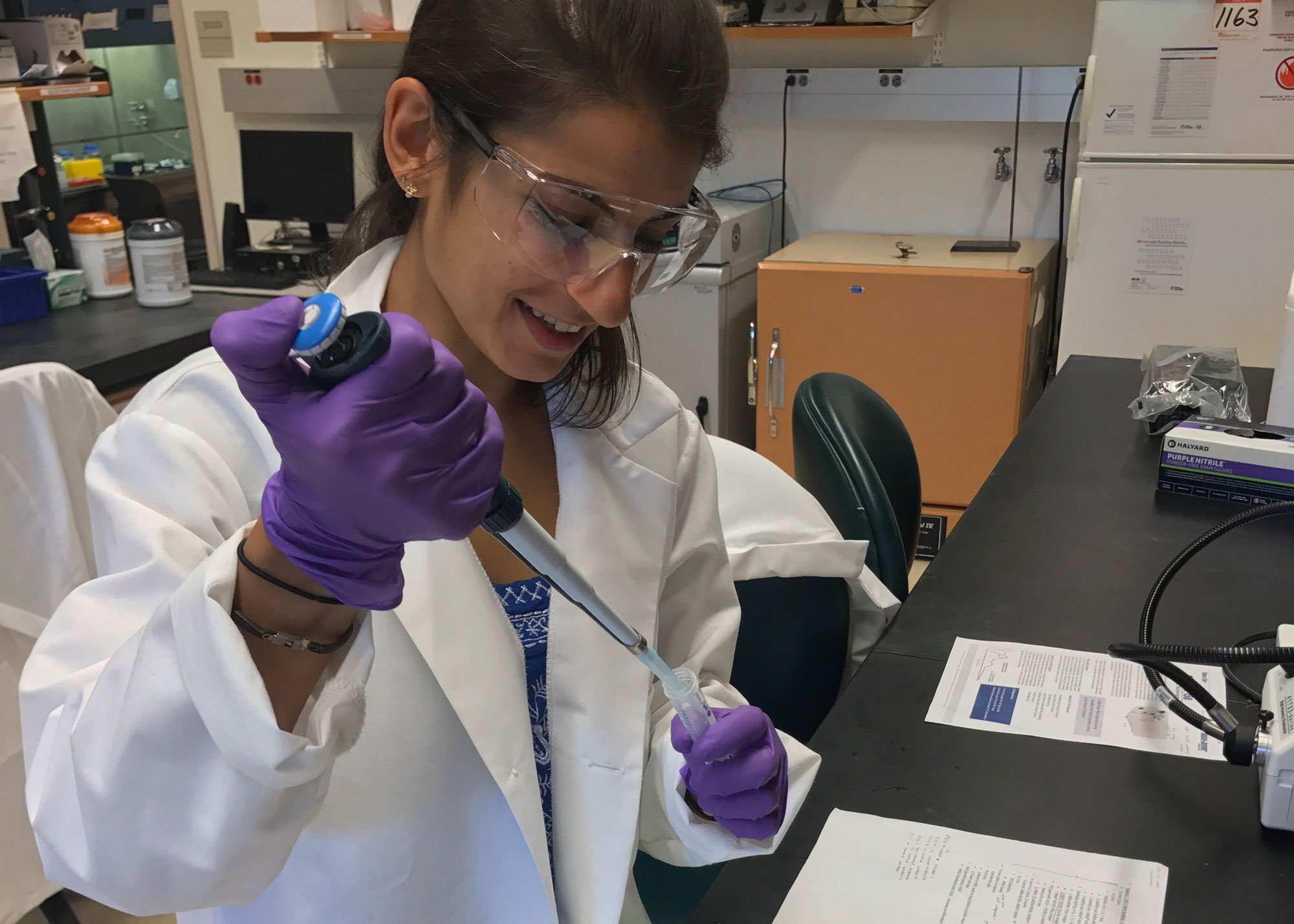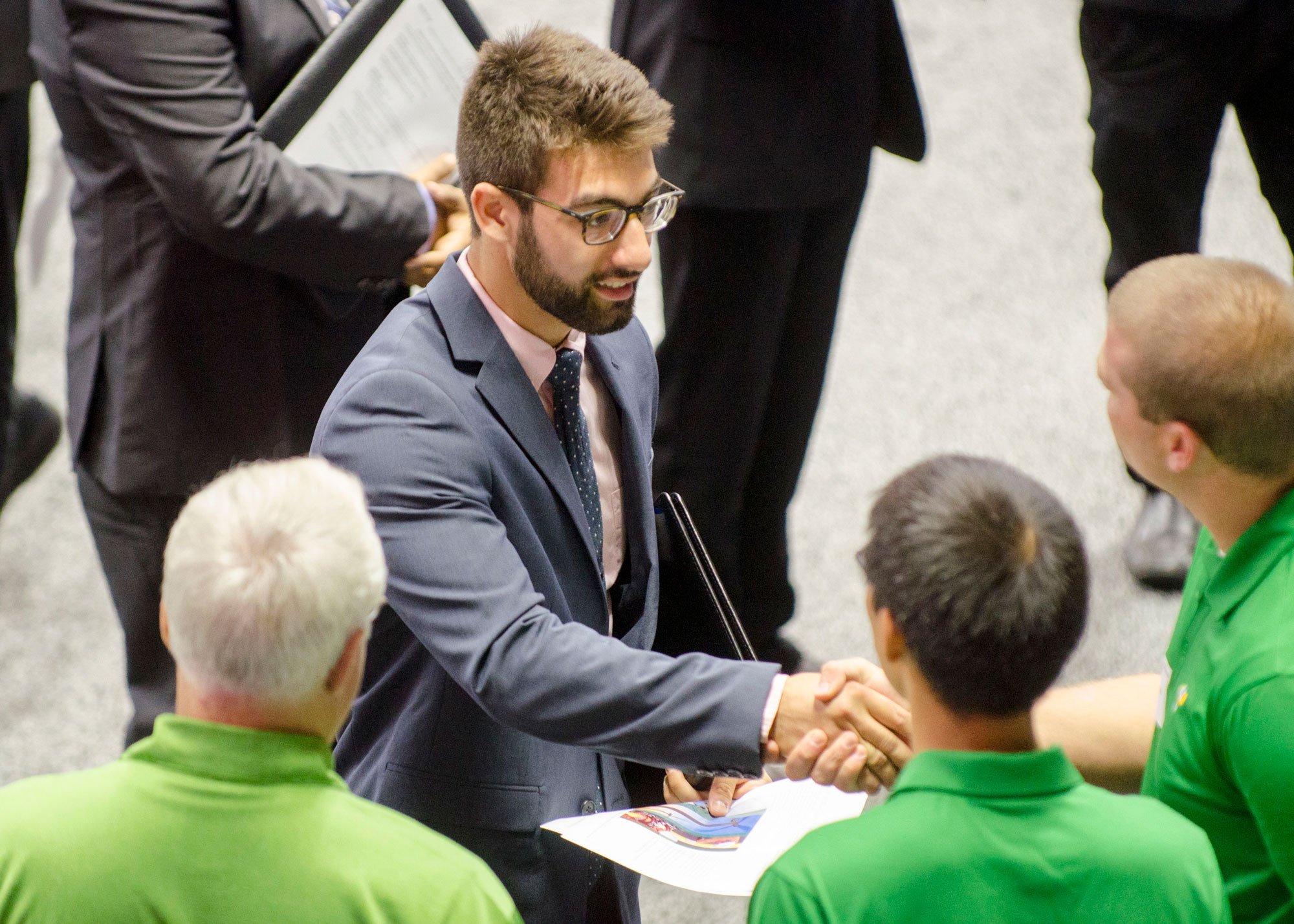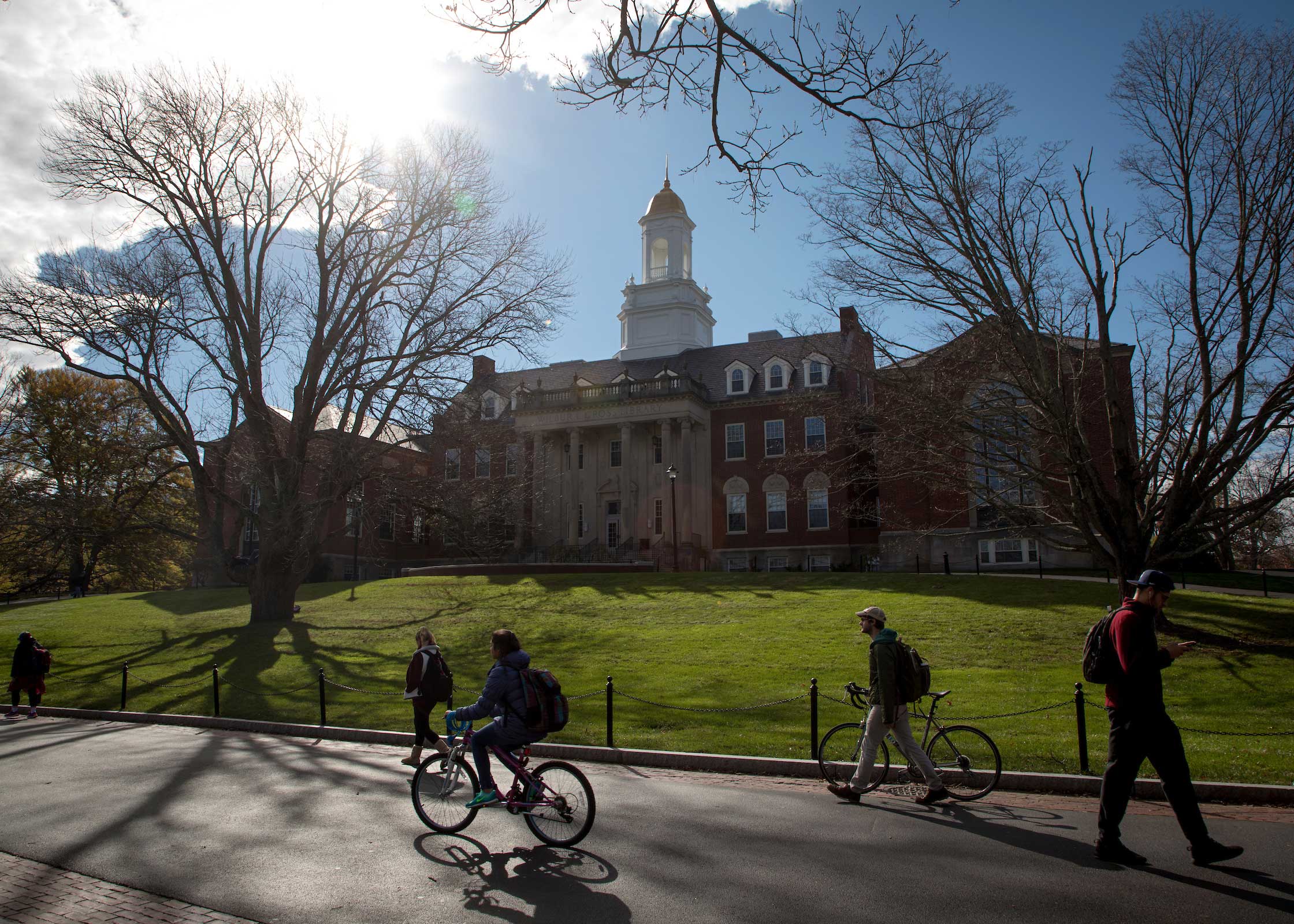5 minutes to read
UConn’s School of Engineering sets the national standard for closing the gender gap.
Women make up 24.3 percent of UConn’s engineering graduates–tops among public institutions nationally.
How does UConn do it? It’s all about programs and outreach for aspiring female engineers, some of which starts well before college. These include:
- Multiply Your Options, an all-day conference for eighth grade girls
- A five-week intensive summer program called BRIDGE that prepares underrepresented freshmen students for the engineering curriculum.
- An active chapter of the Society of Women Engineers, which helps support students’ professional interests, and,
- A female-focused Living and Learning Community called WiMSE (Women in Math, Science and Engineering), a residential experience for female STEM majors at the Peter J. Werth Residence Tower.
“The good news is that we have made strides in all majors, but significant work remains to be done,” said Dr. Daniel D. Burkey, Professor-in-Residence in Chemical & Biomolecular Engineering and Associate Dean for Undergraduate Education and Diversity.
“Alumni and philanthropic support is a critical piece,” Burkey said. “By providing scholarships and other financial incentives and making it easier for underrepresented students to choose UConn, we increase our success at getting and retaining those students here.”
Burkey’s advice to young women is to pursue their passion and find a mentor or other female STEM role model. We found three who shared their stories.
A photo from UConn’s School of Engineering SPARK summer program, which gives young women in middle school and high school access to week long learning programs that focus on different engineering disciplines.
Jeanine Armstrong Gouin ’87 (ENG)
Vice President and Managing Director, Milone & MacBroom, Inc.
The moment she was hooked on engineering
I was in my junior year studying fluid mechanics. I have an image of Dr. Paul Bach flying across the front of the lecture hall like he was a particle of water and then abruptly stopping, throwing his arms up, and exclaiming “AH!” just before he unveiled the central point of the lesson. His energy and passion for engineering was contagious in a way I never knew possible, and my love for the subject matter was the final hook.
Her UConn experience
My UConn professors demanded a lot from us and there were times when I struggled. But my professors cared. They knew me by my first name, helped me, hired me as a student, and later helped me get my first job. They inspired me to work hard and stay determined.
Her advice for future women engineers
I distinctly recall being 17 years old, sitting across from my high school guidance counselor, and telling him that I wanted to be an engineer. He said, “You know, you might want to go into something more on your level, like nursing or teaching.” In his defense, it wasn’t that common for young women to study engineering in the early 1980s. But when I came home in tears later that day, my wise and wonderful parents told me with absolute certainty that I could be an engineer, that they would support me every step of the way. Every young woman should be so lucky to have someone in their lives who debunks the old stereotypes and outdated ideas of what a modern-day engineer looks like. Be your own champion and remember to support fellow future women engineers.
The moment she was hooked on engineering
I was in my junior year studying fluid mechanics. I have an image of Dr. Paul Bach flying across the front of the lecture hall like he was a particle of water and then abruptly stopping, throwing his arms up, and exclaiming “AH!” just before he unveiled the central point of the lesson. His energy and passion for engineering was contagious in a way I never knew possible, and my love for the subject matter was the final hook.
Her UConn experience
My UConn professors demanded a lot from us and there were times when I struggled. But my professors cared. They knew me by my first name, helped me, hired me as a student, and later helped me get my first job. They inspired me to work hard and stay determined.
Her advice for future women engineers
I distinctly recall being 17 years old, sitting across from my high school guidance counselor, and telling him that I wanted to be an engineer. He said, “You know, you might want to go into something more on your level, like nursing or teaching.” In his defense, it wasn’t that common for young women to study engineering in the early 1980s. But when I came home in tears later that day, my wise and wonderful parents told me with absolute certainty that I could be an engineer, that they would support me every step of the way. Every young woman should be so lucky to have someone in their lives who debunks the old stereotypes and outdated ideas of what a modern-day engineer looks like. Be your own champion and remember to support fellow future women engineers.
Jeanine Armstrong Gouin ’87 (ENG)
Vice President and Managing Director, Milone & MacBroom, Inc.
The moment she was hooked on engineering
I was in my junior year studying fluid mechanics. I have an image of Dr. Paul Bach flying across the front of the lecture hall like he was a particle of water and then abruptly stopping, throwing his arms up, and exclaiming “AH!” just before he unveiled the central point of the lesson. His energy and passion for engineering was contagious in a way I never knew possible, and my love for the subject matter was the final hook.
Her UConn experience
My UConn professors demanded a lot from us and there were times when I struggled. But my professors cared. They knew me by my first name, helped me, hired me as a student, and later helped me get my first job. They inspired me to work hard and stay determined.
Her advice for future women engineers
I distinctly recall being 17 years old, sitting across from my high school guidance counselor, and telling him that I wanted to be an engineer. He said, “You know, you might want to go into something more on your level, like nursing or teaching.” In his defense, it wasn’t that common for young women to study engineering in the early 1980s. But when I came home in tears later that day, my wise and wonderful parents told me with absolute certainty that I could be an engineer, that they would support me every step of the way. Every young woman should be so lucky to have someone in their lives who debunks the old stereotypes and outdated ideas of what a modern-day engineer looks like. Be your own champion and remember to support fellow future women engineers.
Stephany Santos ’12 (ENG) ’16 MS
Graduate Researcher/Doctoral Student; Co-Head, Engineering Ambassadors
The moment she was hooked on engineering
Growing up, I was encouraged to pursue a career that was “appropriate for women,” meaning something that allowed me to make taking care of my family my priority. I initially chose engineering, knowing that my father worked for Pratt & Whitney making airplane engines. In my first year at UConn, my eyes were opened not only to all the different branches of engineering, but to the limitless opportunities engineers have to help people and change the world.
Her UConn experience
My favorite professor and mentor is Kevin McLaughlin, who believes in student leadership and exposing student potential more than anyone I’ve previously met. Through multiple opportunities to teach for the BRIDGE Program, Pre-Engineering Program, and Engineering Ambassadors, he has helped foster my love of teaching and lifelong learning.
Her advice for future women engineers
First and foremost, do not undermine your intelligence and your accolades. Second, speak up for yourself and your ideas. Third, advice from my mother: Do your best. Don’t settle for less. Fourth: find mentors who truly care about you.
Stephany Santos ’12 (ENG) ’16 MS
Graduate Researcher/Doctoral Student; Co-Head, Engineering Ambassadors
The moment she was hooked on engineering
Growing up, I was encouraged to pursue a career that was “appropriate for women,” meaning something that allowed me to make taking care of my family my priority. I initially chose engineering, knowing that my father worked for Pratt & Whitney making airplane engines. In my first year at UConn, my eyes were opened not only to all the different branches of engineering, but to the limitless opportunities engineers have to help people and change the world.
Her UConn experience
My favorite professor and mentor is Kevin McLaughlin, who believes in student leadership and exposing student potential more than anyone I’ve previously met. Through multiple opportunities to teach for the BRIDGE Program, Pre-Engineering Program, and Engineering Ambassadors, he has helped foster my love of teaching and lifelong learning.
Her advice for future women engineers
First and foremost, do not undermine your intelligence and your accolades. Second, speak up for yourself and your ideas. Third, advice from my mother: Do your best. Don’t settle for less. Fourth: find mentors who truly care about you.
Kristin Morico PE, BCEE, CSP, D. WRE, ENV SP, F. ASCE ’90 MS, ’04 MBA
EHS Strategic Management Executive Director, AECOM
The moment she was hooked on engineering
My grandfather, a toolmaker, had a profound influence on me at an early age. When I was 7 or 8 years old in his home workshop, he taught me great skills. He showed me how to use a variety of woodworking and engineering devices, including tape measures, micrometers, planes, saws, and drills. I excelled in math throughout grade school and high school. When I was in my early twenties, I worked on my own car, performing preventative maintenance activities like oil changes, gas/air filter changes, and even rebuilding a carburetor. From an academic and experience perspective, engineering was so exciting to me.
Her UConn experience
I have the fondest of memories of my UConn engineering days. Every time I walk into the Castleman building, it brings me right back! My advisor, Domenico Grasso, was very supportive and influential. We are good friends to this day. I recently joined him on a professional webinar session on engineering leadership.
Her advice for future women engineers
Don’t let anyone deter you from aspiring to achieve your goal of becoming an engineer. When I was first going to school more than 30 years ago, I was told “you will NEVER find a job in environmental engineering.” I’m living proof of proving all of them wrong. Persevere and follow your goal. You are unstoppable!
Kristin Morico PE, BCEE, CSP, D. WRE, ENV SP, F. ASCE ’90 MS, ’04 MBA
EHS Strategic Management Executive Director, AECOM
The moment she was hooked on engineering
My grandfather, a toolmaker, had a profound influence on me at an early age. When I was 7 or 8 years old in his home workshop, he taught me great skills. He showed me how to use a variety of woodworking and engineering devices, including tape measures, micrometers, planes, saws, and drills. I excelled in math throughout grade school and high school. When I was in my early twenties, I worked on my own car, performing preventative maintenance activities like oil changes, gas/air filter changes, and even rebuilding a carburetor. From an academic and experience perspective, engineering was so exciting to me.
Her UConn experience
I have the fondest of memories of my UConn engineering days. Every time I walk into the Castleman building, it brings me right back! My advisor, Domenico Grasso, was very supportive and influential. We are good friends to this day. I recently joined him on a professional webinar session on engineering leadership.
Her advice for future women engineers
Don’t let anyone deter you from aspiring to achieve your goal of becoming an engineer. When I was first going to school more than 30 years ago, I was told “you will NEVER find a job in environmental engineering.” I’m living proof of proving all of them wrong. Persevere and follow your goal. You are unstoppable!
Rita Matta ’16 (ENG)
Yale University doctoral student
With her family struggling with medical bills, Rita Matta got the help she needed when she received a scholarship for her senior year as an undergraduate at UConn.
“I was concerned about paying for my next year of college. It was a huge relief to me. I remember calling my mom and crying for hours. I felt infinitely blessed by being able to pursue my education with less financial burden.”
Rita Matta ’16 (ENG)
Yale University doctoral student
With her family struggling with medical bills, Rita Matta got the help she needed when she received a scholarship for her senior year as an undergraduate at UConn.
“I was concerned about paying for my next year of college. It was a huge relief to me. I remember calling my mom and crying for hours. I felt infinitely blessed by being able to pursue my education with less financial burden.”
[jetpack-related-posts]
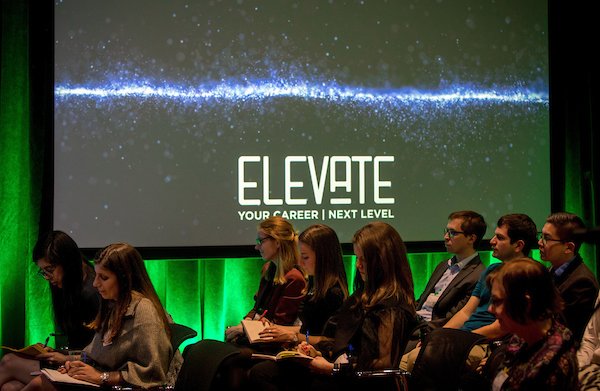
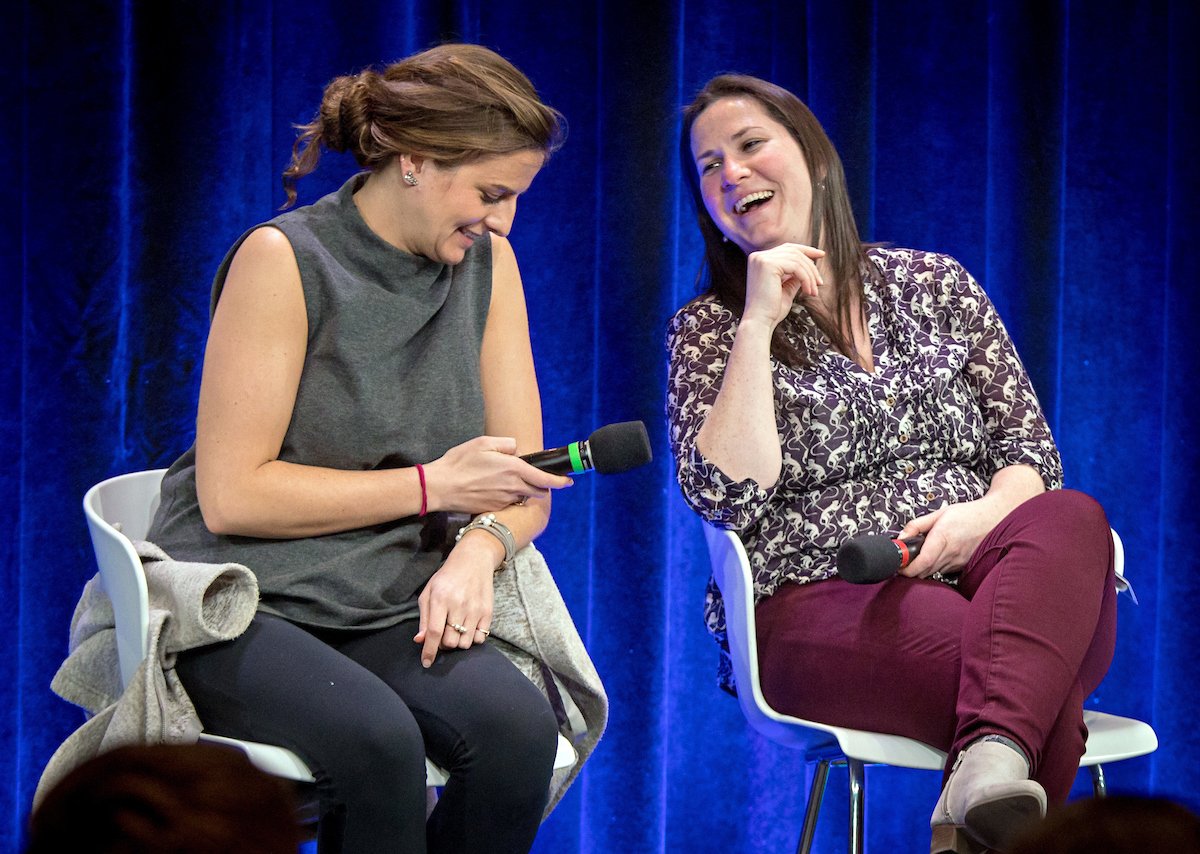
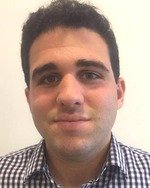 Jesse Cohen ’12 is a graduate of the School of Engineering
Jesse Cohen ’12 is a graduate of the School of Engineering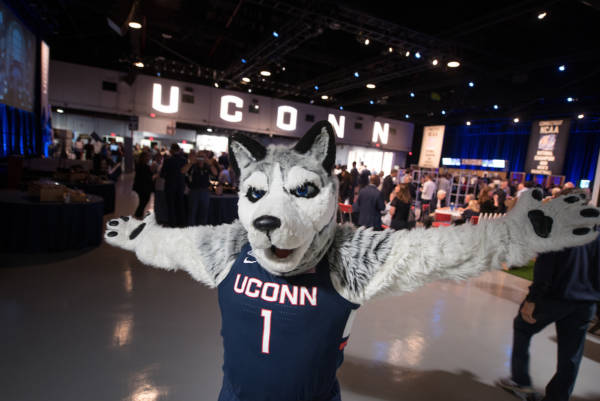
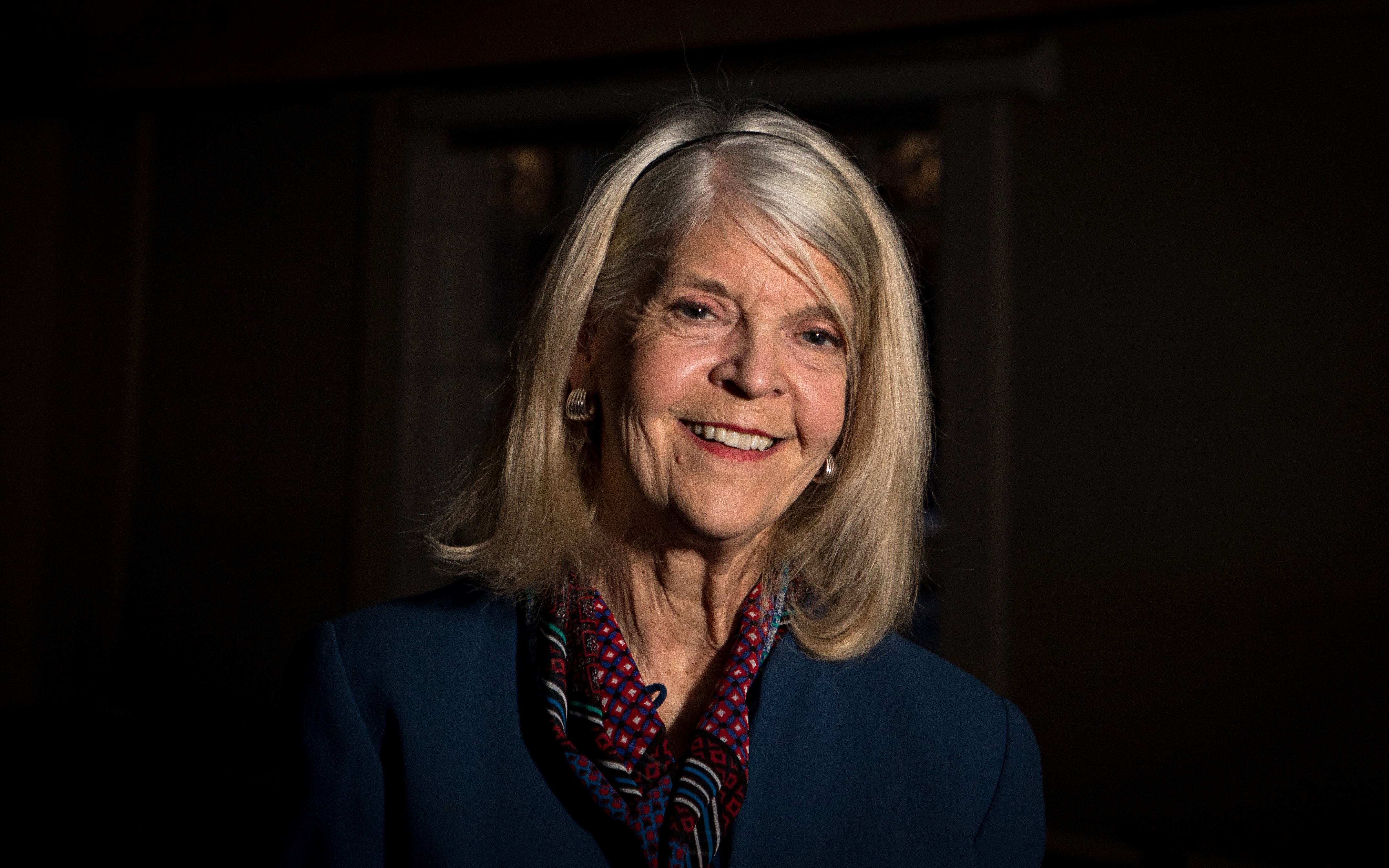
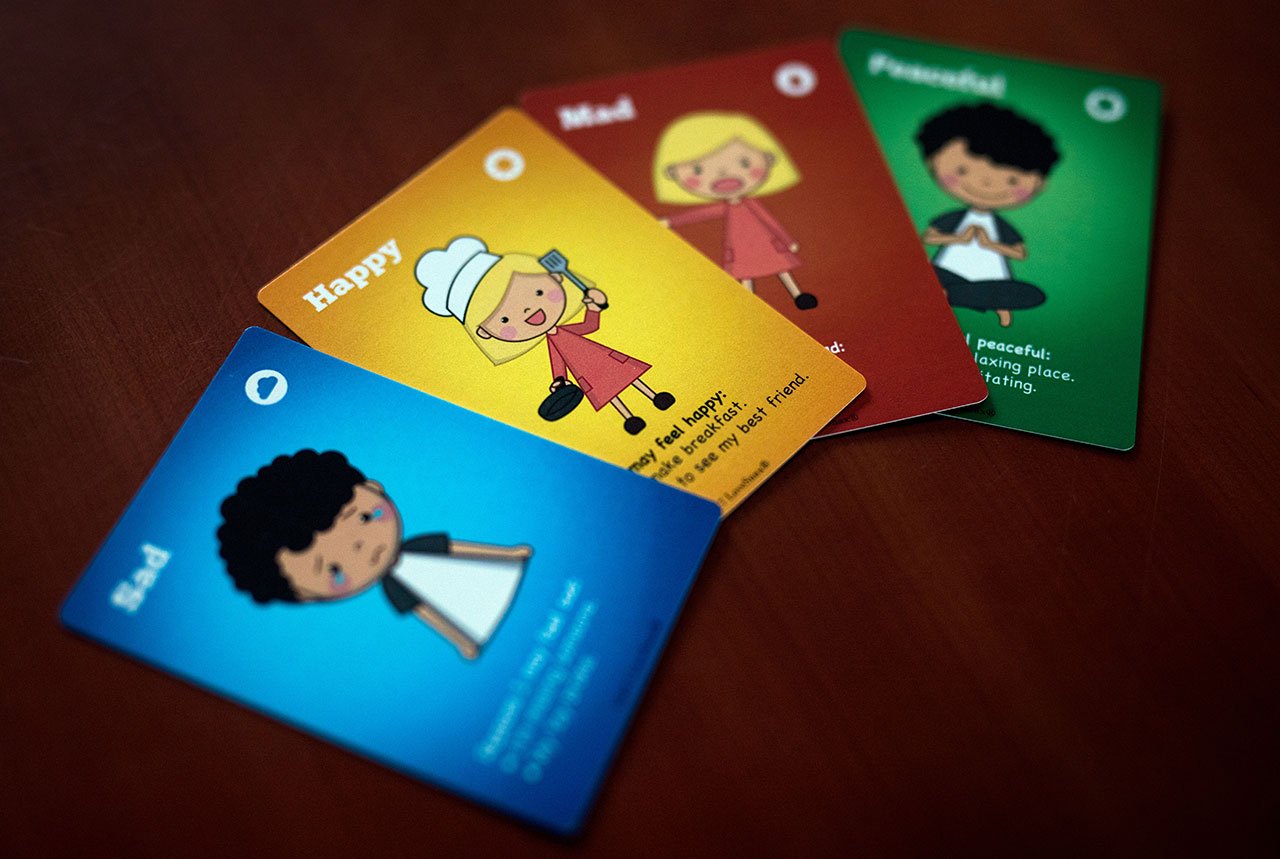
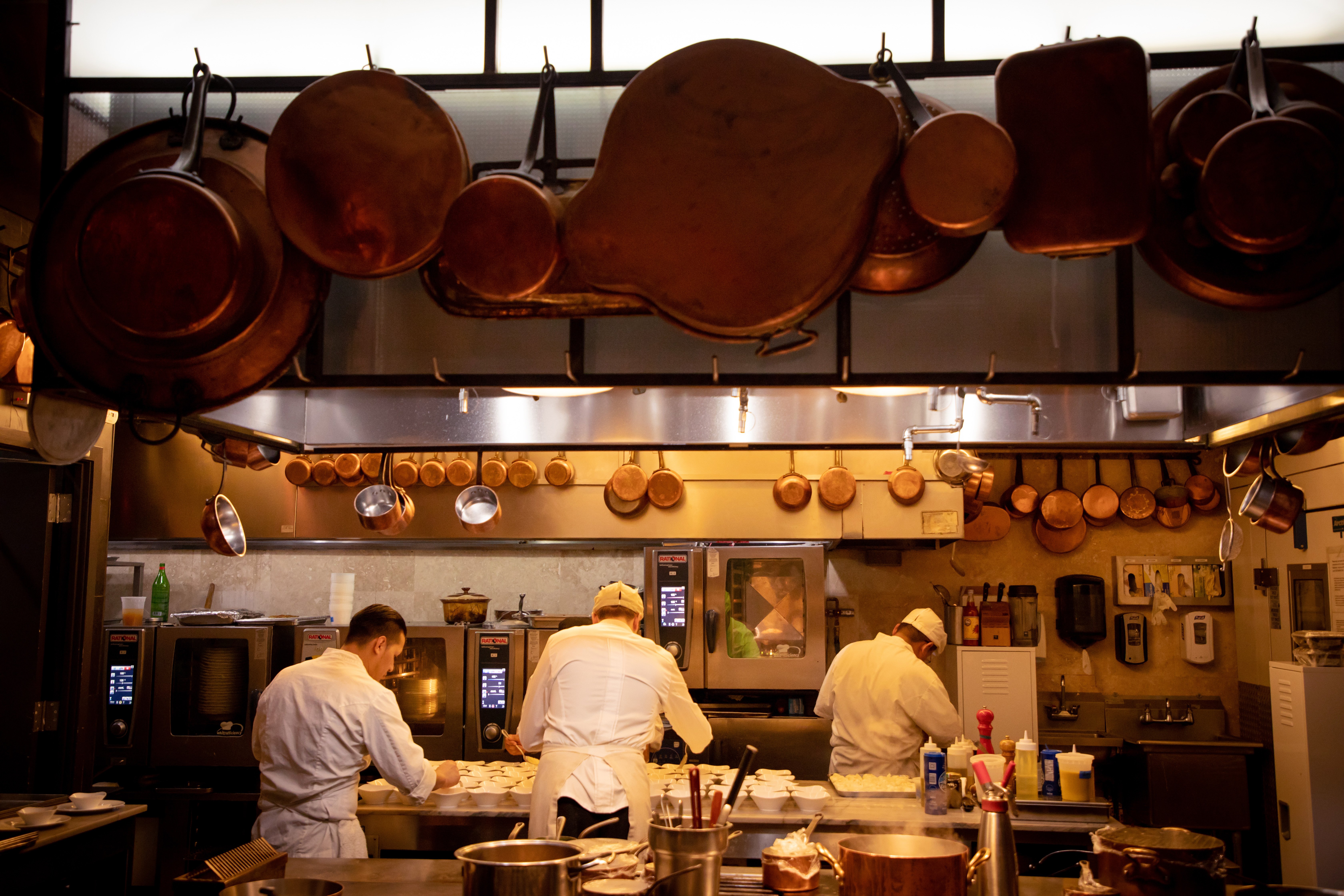
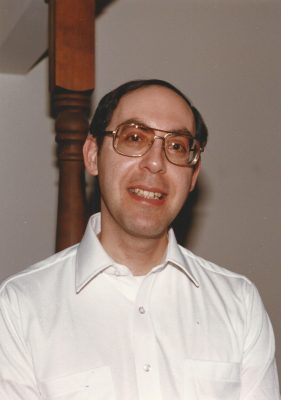
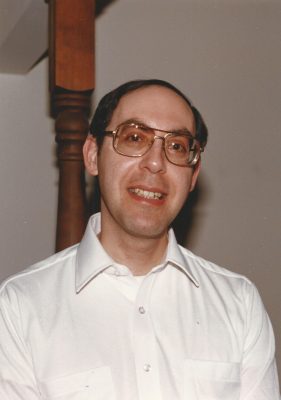 Stephen Cohen led a quiet, intensely private life in southern California, but his legacy at UConn is larger than life.
Stephen Cohen led a quiet, intensely private life in southern California, but his legacy at UConn is larger than life.